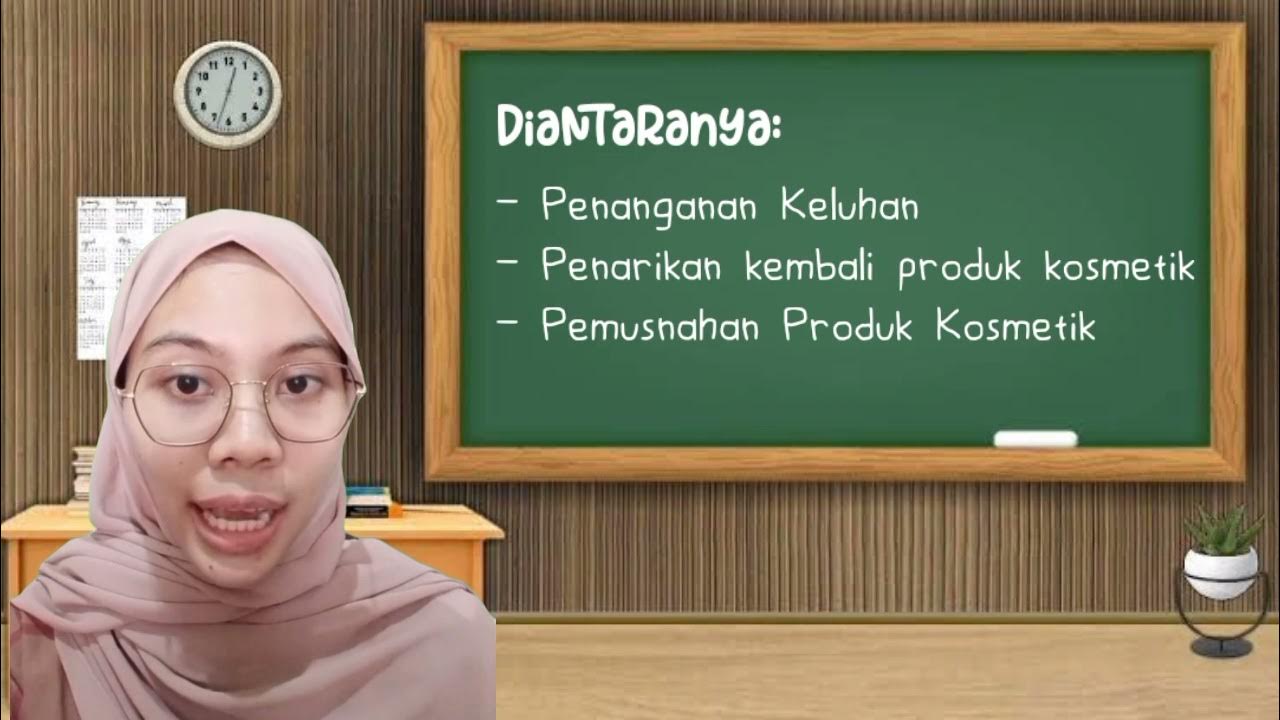Cara Pembuatan Obat yang Baik (CPOB)
Summary
TLDRThis presentation focuses on the essential aspects of Good Manufacturing Practices (GMP) for drug production. It covers key elements such as quality management, personnel training, facilities, equipment, sanitation, and hygiene. Key topics include the role of process validation, quality control, audits, and the handling of customer complaints. Emphasis is placed on maintaining product safety, consistency, and regulatory compliance throughout the production process. The session also highlights critical procedures for ensuring the integrity and quality of pharmaceutical products, including documentation, troubleshooting, and equipment calibration. The goal is to provide a comprehensive overview of the standards and practices required for the safe production of pharmaceuticals.
Takeaways
- 😀 Quality management in pharmaceutical manufacturing ensures that products meet safety standards and regulatory requirements.
- 😀 Trained and qualified personnel are essential for maintaining cleanliness and performing key production tasks in compliance with Good Manufacturing Practices (CPOB).
- 😀 Well-designed buildings and facilities help reduce errors in production and improve overall operational efficiency.
- 😀 Proper equipment must be used in production to ensure standardization, ease of cleaning, and consistency across batches.
- 😀 Sanitation and hygiene practices are crucial to minimize contamination and ensure a safe production environment, with regular health checks and use of personal protective equipment (PPE).
- 😀 The production process includes careful monitoring of raw materials, packaging, and contamination control, as well as rejecting substandard products.
- 😀 Quality control (QC) processes ensure that the final products meet the required quality standards and are safe for consumers.
- 😀 Self-inspections and regular audits are necessary to evaluate compliance and improve production quality.
- 😀 Handling complaints from consumers, including recalling defective products, is a key part of maintaining product quality and trust.
- 😀 Proper documentation and record-keeping ensure that production processes are followed accurately and help mitigate the risk of errors during manufacturing.
Q & A
What is the main goal of Good Manufacturing Practices (GMP) in pharmaceutical production?
-The main goal of GMP in pharmaceutical production is to ensure that products are consistently produced and controlled according to quality standards, ensuring safety, effectiveness, and compliance with regulations.
Why is quality management crucial in pharmaceutical manufacturing?
-Quality management is crucial because it ensures that the production process meets the required standards and that the final product is safe, effective, and free from harmful risks or defects.
What role do personnel play in ensuring GMP compliance?
-Personnel are responsible for maintaining hygiene standards, following procedures, and ensuring that tasks are completed according to GMP requirements. They must be properly trained and qualified to execute their responsibilities.
What are the key aspects of the facilities and equipment used in pharmaceutical production?
-The facilities and equipment must be designed to minimize risks of contamination and errors. Proper equipment calibration, cleanliness, and functionality are essential for producing safe and consistent products.
How does sanitation and hygiene impact pharmaceutical production?
-Sanitation and hygiene are critical to preventing contamination from microorganisms, bacteria, or fungi. Effective sanitation protocols help maintain product integrity and ensure the safety of the final product.
What steps are involved in the production process of pharmaceuticals?
-The production process includes ensuring the availability of raw materials, packaging, process validation, reducing contamination risks, labeling, quality checks, and documentation. These steps ensure the consistency and quality of the final product.
What is the importance of quality control in pharmaceutical manufacturing?
-Quality control ensures that the final product meets safety, identity, purity, and potency standards. It involves rigorous testing of ingredients, finished products, and adherence to regulations to guarantee the product is safe and effective.
How should complaints and product recalls be handled according to GMP guidelines?
-Complaints and product recalls should be thoroughly investigated to identify the root cause. If necessary, corrective actions are taken, and products that do not meet the required quality standards may be withdrawn from the market.
What role does documentation play in the GMP process?
-Documentation is essential for recording all activities, ensuring accountability, and minimizing errors. It serves as proof that manufacturing processes followed GMP requirements and provides traceability for all actions taken.
How is equipment calibration performed in pharmaceutical manufacturing?
-Equipment calibration involves verifying the accuracy of tools like thermometers, scales, and meters. It is done by using appropriate standards and procedures, ensuring that tools provide consistent and accurate results, and is conducted regularly.
Outlines

هذا القسم متوفر فقط للمشتركين. يرجى الترقية للوصول إلى هذه الميزة.
قم بالترقية الآنMindmap

هذا القسم متوفر فقط للمشتركين. يرجى الترقية للوصول إلى هذه الميزة.
قم بالترقية الآنKeywords

هذا القسم متوفر فقط للمشتركين. يرجى الترقية للوصول إلى هذه الميزة.
قم بالترقية الآنHighlights

هذا القسم متوفر فقط للمشتركين. يرجى الترقية للوصول إلى هذه الميزة.
قم بالترقية الآنTranscripts

هذا القسم متوفر فقط للمشتركين. يرجى الترقية للوصول إلى هذه الميزة.
قم بالترقية الآنتصفح المزيد من مقاطع الفيديو ذات الصلة

Pengertian CPOB, CPKB DAN CPOTB

12 Aspek CPOB (2012) SMK Farmasi

Good Laboratory Practices in Microbiology

Personnel Practices: Good Manufacturing Practices (GMPs) in Food Industry │ Food Safety

Panduan Penerapan Good Manufacturing Practice (GMP) Sesuai SNI CXC 1:1969 Revisi 2020

17 Parameter CPPOB - BPOM
5.0 / 5 (0 votes)
